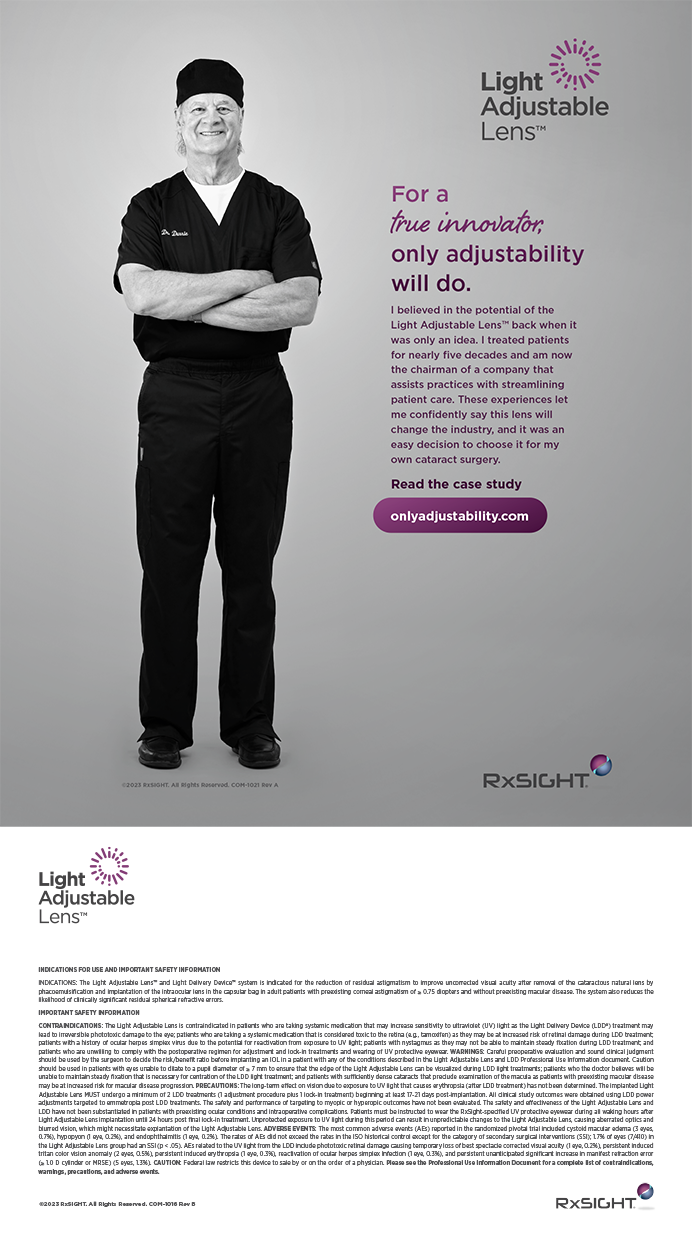I recall an attendee who raised his hand during a course on presbyopia-correcting IOLs that I was teaching a couple of years ago. He said he had implanted 50 multifocal IOLs and was proud that he had achieved excellent results. He then informed me that he thought it was time he learned how to perform a limbal relaxing incision (LRI).
I was a little surprised. Statistically, at least 25 of this physician’s patients should have had 0.75 D of astigmatism or more,1 and based on my experience, there was little chance that all of them were really happy with that level of cylinder. A commonly held attitude among surgeons is that patients will tolerate small refractive errors after the cataract procedure. Nothing could be further from the truth. I have found that most patients can tolerate postoperative astigmatism of 0.50 D or less but that some patients will require treatment for even half a diopter. Most of us surgeons would not want a pair of glasses that was off by half a diopter. Why should refractive cataract surgery patients not be equally demanding?
Patients with presbyopia-correcting IOLs are sensitive to even minor refractive errors, especially residual astigmatism, which results in glare, halos, and reduced Snellen visual acuity. Those of us offering refractive cataract surgery have to be willing and able to treat small amounts of cylinder.
Our goal as refractive cataract surgeons is not merely to give patients vision they will tolerate but to exceed their expectations. For this reason, I often find myself fine-tuning even 0.50 D of residual cylinder.
There are a number of different techniques for treating astigmatism. I strongly advocate the use of excimer laser photoablation for its accuracy and toric IOLs for their simplicity and safety. Two new IOLs in the United States are the Tecnis Toric (Abbott Medical Optics) and the Trulign Toric (Bausch + Lomb), both of which are discussed in this issue of Cataract & Refractive Surgery Today. The posterior cornea plays a role in refractive results with toric IOLs, and Stephen Klyce, PhD, provides an overview on measuring posterior and anterior corneal astigmatism.
Several inherent advantages to LRIs make this procedure an extremely important tool. Jonathan Rubenstein, MD, a master of LRIs, discusses the role of manually performed corneal and limbal relaxing incisions in modern cataract surgery. Treating astigmatism with a femtosecond laser is the newest option for correcting cylinder, and it offers precision and safety not possible with manually created LRIs. Jonathan Solomon, MD; Jonathan Talamo, MD; Robert Weinstock, MD; and I share pearls for using the laser for this purpose.
A successful transition from cataract to refractive IOL surgery requires attention to the details that improve patients’ visual outcomes. For many of us, this means learning to effectively prevent and treat astigmatism. Enjoy this issue of CRST!
Eric D. Donnenfeld, MD
Chief Medical Editor
- Ferrer-Blasco T, Montés-Micó R, Peixoto-de-Matos SC, et al. Prevalence of corneal astigmatism before cataract surgery. J Cataract Refract Surg. 2009;35(1):70-77.


